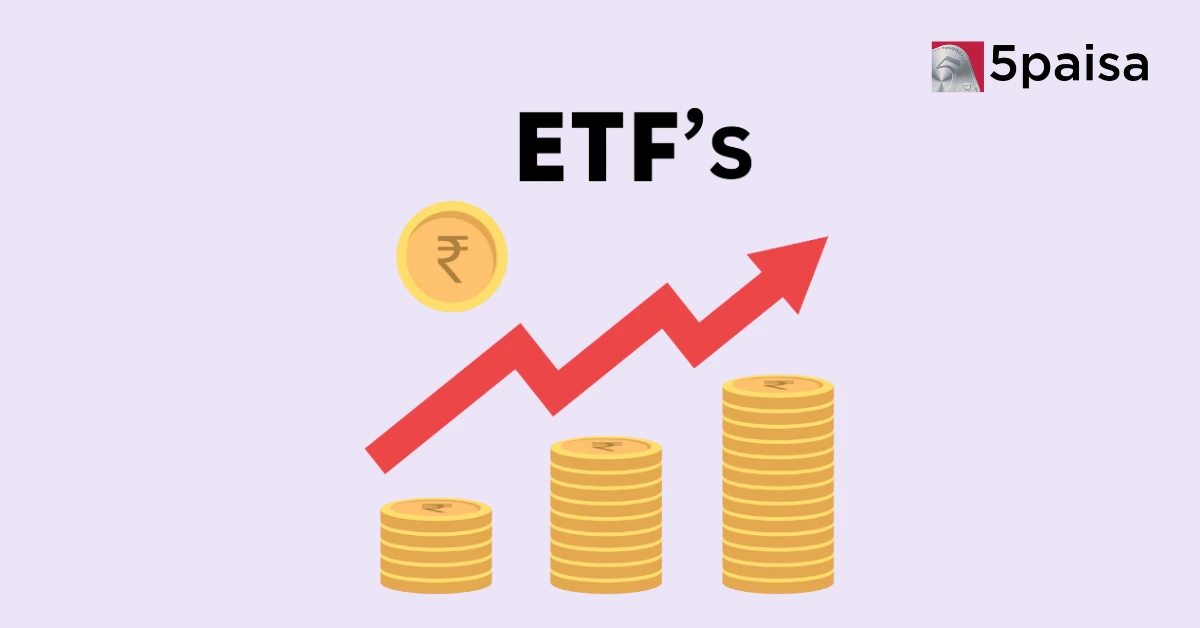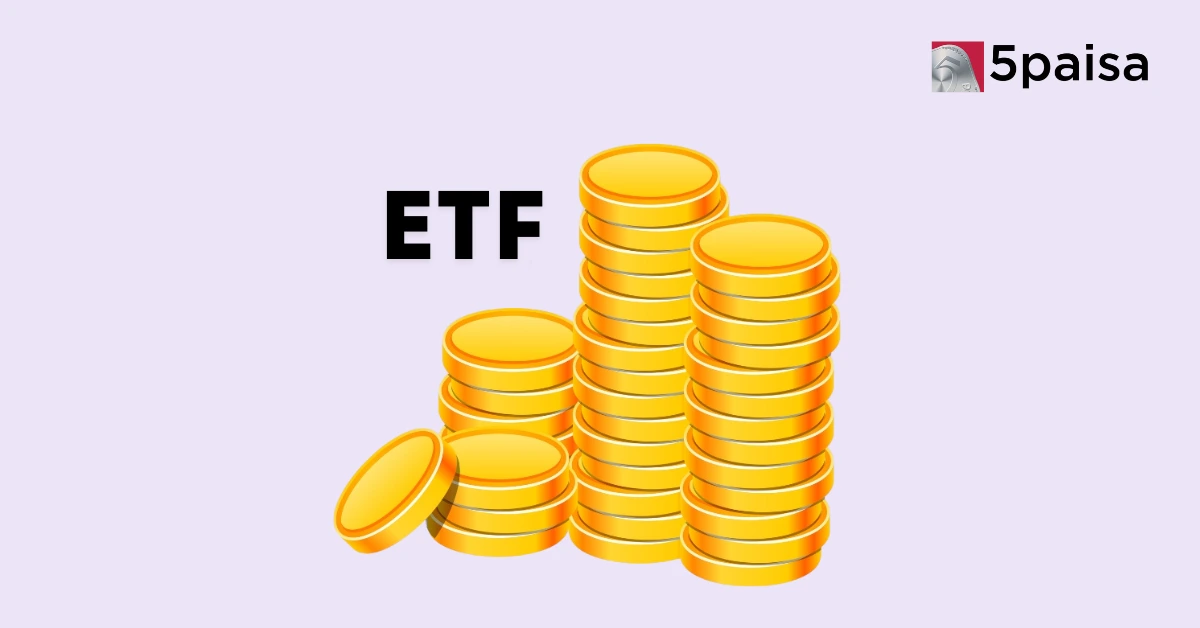Exchange Traded Funds (ETF)
Exchange Traded Funds (ETFs) are investment funds that trade on stock exchanges like stocks but offer diversification similar to mutual funds. ETF investments track stock market indices such as BSE SENSEX and NIFTY 50. You can buy and sell throughout the trading day and take advantage of intraday price movements. ETFs combine the flexibility of stocks with the diversification of mutual funds for a smart investment choice.
Benefits of ETFs
| Minimise Risk | Cost-Effective | Liquidity | Tax Advantage | Transparency |
|---|---|---|---|---|
| A diversified portfolio of assets reduces the impact of market fluctuations | Low cost and low expense ratio compared to mutual funds | Buy and sell ETFs at any time throughout the exchange’s trading day | ETFs offer better tax efficiency than direct stock investments | Real-time price and performance updates for clarity |
| Affordable | Passive Management | Flexibility | Convenience | Accessibility |
| Trade with minimal investment by purchasing ETF units. | ETFs mirror market indices and do not try to outperform them | Invest in various assets, from stocks and commodities to bonds and more | ETFs can be held in a Demat account for easy management. | ETFs offer easy access to diverse asset classes and global markets. |
How to Invest in ETFs with 5paisa?
Here is how to start an ETF investment with 5paisa in three simple steps.
| Step 1 | Step 2 | Step 3 |
|---|---|---|
| Open a Demat Account with us on our 5paisa web portal or app. | Explore ETFs and choose one that aligns with your goals and risk profile. | Transfer funds to your account and start buying and selling ETF units. |
Frequently asked Questions
Find answers to frequently asked questions to help you understand our platform better.
ETFs, referred to as Exchange Traded Funds, are investment funds that hold specific assets, like gold (Gold ETFs), or a collection of assets, like NIFTY 50 stocks.
You can buy or sell ETF funds at any time on the exchange. They track market indices (passive funds), which means their price fluctuates based on the index’s performance.
ETFs have a lower expense ratio and let you buy units based on your budget, offering an affordable investment option.
Yes, ETFs are traded in India. You can explore the top ETF funds in India for diverse exchange-traded investment options.
● Fund providers create ETFs - They pool money from many investors to build a diverse portfolio mirroring a specific index or sector.
● Listing - ETF funds are listed on stock exchanges. The value of an ETF fund share is closely tied to the worth of its underlying assets.
● Investing or Trading - Investors can buy or sell ETFs on the exchange throughout the trading day.
● Gaining a stake in the ETF - Fund providers offer a stake in the ETF to the investor, not its underlying assets.
● Returns - Investors earn returns based on the ETF’s performance. It is the gain or loss based on the performance of the underlying asset.
Yes, you can buy or sell ETFs just like individual stocks during exchange trading hours. You can log in to your 5paisa account and execute the buy and sell actions.
● Assess your Financial Condition and Goals - A careful assessment of your investment goals, risk tolerance, and time horizon is the first important step.
● Find ETFs based on your Goals - Find ETFs aligning with specific objectives such as long-term growth, income generation, or capital preservation.
● Evaluate Factors - Consider factors like the ETF's underlying holdings, expense ratio, and performance history in your decision-making.
● Diversify your Portfolio - Diversification is key. Include ETFs spanning various asset classes like stocks, bonds, and commodities to mitigate risk.
● Seek Expert Guidance - Financial advisors can provide valuable insights to find the best ETF funds in India that align with your investment goals.
No, after Budget 2024, the indexation benefit for long-term capital gains (LTCG) was removed for ETFs. LTCG is now taxed at 12.5% without indexation. Short-term capital gains tax (STCG) on equity ETFs is taxed at 20%, while non-equity ETFs follow the investor’s income tax slab.
Yes, you can sell ETF Funds any time during the market hours on an exchange. You can log in to your 5paisa trading account and execute the sell action.
ETF Related Articles
- 5Paisa Research Team
- 18 Nov 2024
- 5Paisa Research Team
- 11 Jan 2024
- 5Paisa Research Team
- 30 Jan 2025
- 5Paisa Research Team
- 22 Apr 2025










